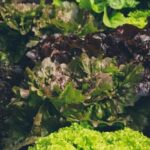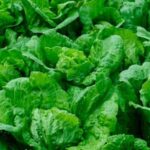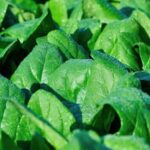Are you looking for a natural and effective way to improve your vegetable garden? Using hay mulch for vegetable gardens can be the solution you need.
Hay mulch is an organic material that offers numerous benefits, such as weed control, moisture retention, and soil enrichment. In this article, we will explore the different types of hay mulch, how to apply it to your vegetable garden, its advantages over other types of mulch, common mistakes to avoid, maintenance tips, and success stories from real-life experiences.
Hay mulch comes in various forms and can be made from different types of grasses and straw. Each variety has its own characteristics and qualities that make it suitable for specific gardening needs. Whether you are new to using hay mulch or have some experience with it, understanding its different types can help you make an informed decision on which one would work best for your vegetable garden.
In addition to discussing the types of hay mulch available, we will also provide a step-by-step guide on how to apply hay mulch to your vegetable garden. Proper application is crucial in order to reap its full benefits. From preparing the soil to applying the mulch in layers, we will walk you through the process so you can achieve optimal results in the health and growth of your vegetables.
Types of Hay Mulch
When it comes to choosing the right hay mulch for your vegetable garden, it’s important to consider the different varieties available and their characteristics. Each type of hay mulch has its own unique qualities that can impact the overall health and growth of your vegetables.
Here are some common types of hay mulch and their characteristics:
- Straw: Straw mulch is one of the most popular options for vegetable gardens. It is lightweight, easy to spread, and breaks down relatively quickly, adding valuable organic matter to the soil.
- Hay: Hay mulch can come from a variety of grasses such as timothy, brome, or alfalfa. It tends to be denser than straw and can provide better coverage and weed control. However, it may contain more weed seeds compared to straw.
- Lucerne: Lucerne hay is known for its high nutrient content, making it an excellent choice for enriching the soil in your vegetable garden. It also decomposes slowly, providing long-lasting benefits.
Each type of hay mulch has its own advantages and drawbacks, so it’s important to choose the one that best suits your garden’s needs.
In order to determine which type of hay mulch is best for your vegetable garden, it’s essential to consider factors such as availability, cost, nutrient content, and compatibility with your specific crops. By carefully evaluating these characteristics, you can select the right type of hay mulch to promote healthy and thriving vegetables in your garden.
How to Apply Hay Mulch to Your Vegetable Garden
Preparation and Planning
Before applying hay mulch to your vegetable garden, it’s important to assess the condition of your garden beds. Remove any existing weeds and debris, loosen the soil, and add a balanced fertilizer if needed. It’s also a good idea to water the soil thoroughly before applying the mulch.
Application Process
When applying hay mulch to your vegetable garden, start by spreading a layer of hay about 2-4 inches thick over the soil surface. Be sure to leave some space around the base of your plants to prevent rot and disease. As you spread the mulch, be mindful not to pack it too tightly or too close together-this can restrict airflow and lead to mold growth.
Maintenance Tips
Once the hay mulch is applied, continue to monitor its condition throughout the growing season. Add more mulch as needed to maintain a depth of 2-4 inches, especially as the mulch breaks down over time.
Additionally, keep an eye out for any signs of weed growth or pests that may be using the hay as a habitat. Regularly check under the mulch for moisture levels-while hay is excellent at retaining water, you’ll still want to ensure that your plants are getting enough hydration.
As you follow these step-by-step guidelines for applying hay mulch in your vegetable garden, you’ll soon experience its numerous benefits firsthand. Whether you’re looking to control weeds, retain moisture, or enrich your soil naturally, using hay mulch can significantly improve both the health and yield of your vegetable garden.
With these maintenance tips in place, you can look forward with confidence to thriving vegetables thanks to using hay mulch for vegetable gardens.
The Benefits of Using Hay Mulch for Vegetable Gardens
Weed Control
One of the primary benefits of using hay mulch for vegetable gardens is its ability to control weed growth. The thick layer of hay can smother out existing weeds and prevent new ones from sprouting. This not only saves time and effort in manual weeding but also helps maintain a neat and tidy garden space. Additionally, by suppressing weed growth, hay mulch allows vegetable plants to thrive without having to compete for nutrients and water.
Moisture Retention
Another significant advantage of using hay mulch in vegetable gardens is its ability to retain moisture in the soil. As the hay decomposes, it absorbs and holds onto moisture, which helps prevent evaporation and keeps the soil consistently moist. This is particularly beneficial during hot summer months when water loss from the soil can be high. By retaining moisture, hay mulch supports healthy root development and reduces the need for frequent watering, ultimately promoting better overall plant growth.
Soil Enrichment
In addition to controlling weeds and retaining moisture, hay mulch also contributes to soil enrichment. As the hay breaks down over time, it adds organic matter to the soil, improving its structure and fertility. This process enhances microbial activity in the soil, promoting nutrient availability for vegetable plants.
Furthermore, as the mulch decomposes, it releases valuable nutrients into the soil, creating a nourishing environment for healthy growth. Overall, using hay mulch for vegetable gardens provides long-term benefits by enriching the soil and supporting plant vitality.
Hay Mulch vs Other Types of Mulch
When it comes to choosing the right type of mulch for your vegetable garden, there are a variety of options to consider. One popular choice is hay mulch, which offers several benefits for gardeners. However, it’s important to understand how hay mulch compares to other types of mulch in order to make an informed decision for your garden.
One key advantage of using hay mulch for vegetable gardens is its ability to suppress weeds. The dense composition of hay can effectively smother weed growth, reducing the need for manual weeding. Additionally, hay mulch helps retain moisture in the soil, providing a consistent source of hydration for your vegetable plants. This can be particularly beneficial during hot and dry periods, as it reduces the need for frequent watering.
In comparison to other types of mulch such as wood chips or bark, hay mulch decomposes more quickly. While this may require more frequent replenishing, it also means that nutrients from the decomposed hay are released into the soil at a faster rate. This can contribute to overall soil enrichment and improved plant health in your vegetable garden.
Overall, while hay mulch offers unique benefits for vegetable gardens, it’s important to weigh these advantages against other types of mulch before making a decision. Each type has its own characteristics and considerations that may be better suited for different gardening needs. With proper research and understanding, you can determine whether hay mulch is the right choice for your own vegetable garden.
| Hay Mulch | Other Types of Mulch |
|---|---|
| Effective weed suppression | Variety of options (e.g. wood chips, bark) |
| Retains moisture in soil | Longer decomposition period |
| Rapid decomposition leads to quick release of nutrients | Potentially longer-lasting effects on soil fertility |
Common Mistakes to Avoid When Using Hay Mulch in Vegetable Gardens
When using hay mulch for your vegetable garden, there are certain mistakes that you should be aware of to ensure the best results. Here are some common mistakes to avoid:
- Not using weed-free hay: One of the most common mistakes when using hay mulch is not ensuring that the hay is free of weed seeds. Using hay that contains weed seeds can lead to an increase in weeds in your vegetable garden, defeating the purpose of using mulch for weed control.
- Applying too thick of a layer: While it’s important to apply a sufficient layer of hay mulch to provide adequate insulation and moisture retention, applying too thick of a layer can prevent water from reaching the soil and hinder plant growth. Aim for a thickness of around 2-4 inches to avoid this mistake.
- Allowing the hay to mat or compact: If the hay mulch becomes matted or compacted, it can prevent water and air from reaching the soil, which can negatively impact plant health. To prevent this, fluff the hay regularly and consider adding a layer of straw or other organic material on top to promote airflow.
Avoiding these common mistakes when using hay mulch in your vegetable gardens will help ensure that you reap all the benefits without encountering any unforeseen issues.
Remember, properly maintaining your hay mulch involves regular inspection and care. By being mindful of these potential pitfalls, you can make sure that your vegetable garden is reaping all the rewards of using hay mulch.
Tips for Maintaining Hay Mulch in Your Vegetable Garden
Maintaining hay mulch in your vegetable garden is essential to ensure its effectiveness and longevity. One important tip for maintaining hay mulch is to regularly check for any signs of mold or mildew. If you notice any, it’s crucial to remove the affected areas immediately to prevent the spread and avoid potential harm to your plants.
Additionally, monitoring the moisture levels of the hay mulch is key. It’s important to keep the mulch consistently moist but not waterlogged, as this can also lead to mold growth.
Another tip for maintaining hay mulch in your vegetable garden is to regularly fluff and turn the mulch. This will help aerate it and prevent it from becoming compacted, which can hinder water penetration and airflow. It also helps distribute nutrients more evenly throughout the soil, promoting healthier plant growth.
Finally, keep an eye out for any pests that may be attracted to the hay mulch. While hay mulch can be an effective barrier against certain pests, it can also provide a hiding place for others. Regularly inspecting the mulch for signs of pest infestation and taking appropriate measures to address them can help maintain a healthy and thriving vegetable garden.
| Maintenance Tip | Details |
|---|---|
| Check for mold or mildew | Regularly inspect the hay mulch for any signs of mold or mildew and remove affected areas immediately. |
| Fluff and turn the mulch | Regularly aerate the hay mulch by fluffing and turning it to prevent compaction and promote even nutrient distribution. |
| Pest inspection | Regularly inspect the mulch for signs of pest infestation and take appropriate measures to address them. |
Success Stories
In conclusion, hay mulch is an excellent option for vegetable gardens, offering a wide range of benefits and practical applications. By using hay mulch, gardeners can effectively control weeds, retain moisture in the soil, and enrich the overall health of their garden beds. The variety of hay mulch types available also makes it adaptable to different garden needs and growing conditions.
When considering the use of hay mulch for vegetable gardens, it’s important to keep in mind that proper application is key to its success. Following a step-by-step guide for applying hay mulch will ensure that your garden reaps the full benefits of this natural material. Additionally, maintaining hay mulch in your vegetable garden is essential for its continued effectiveness, so be sure to follow tips for upkeep to keep your garden thriving.
Ultimately, the success stories shared by many gardeners who have used hay mulch in their vegetable gardens are a testament to its efficacy. Real-life examples show how using hay mulch has led to impressive harvests and overall healthy plants.
With careful application and maintenance, hay mulch can prove to be a valuable asset for any vegetable gardener looking to improve their growing environment and yield. Whether you’re new to gardening or experienced in horticulture, consider giving hay mulch a try in your own vegetable garden.

If you’re looking to get into vegetable gardening, or are just looking for some tips on how to make your current garden better, then you’ve come to the right place! My name is Ethel and I have been gardening for years. In this blog, I’m going to share with you some of my best tips on how to create a successful vegetable garden.





